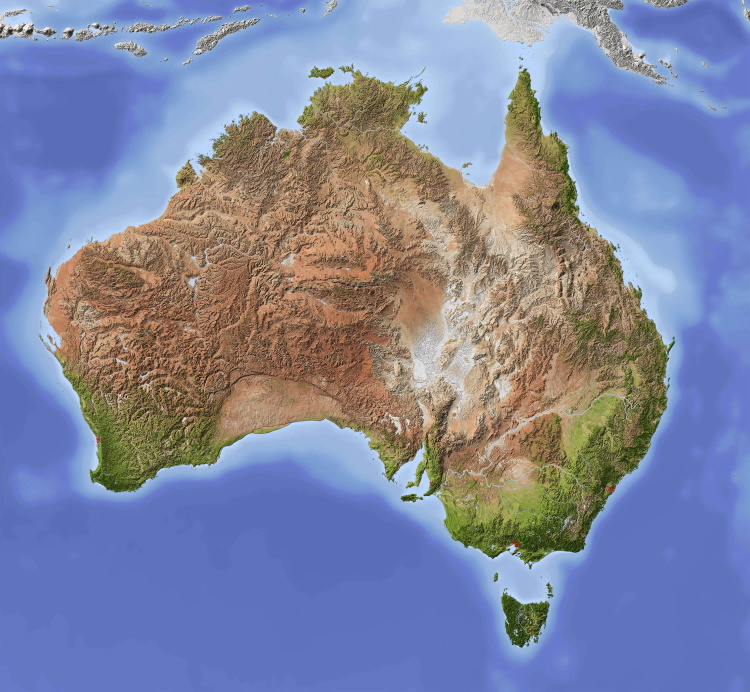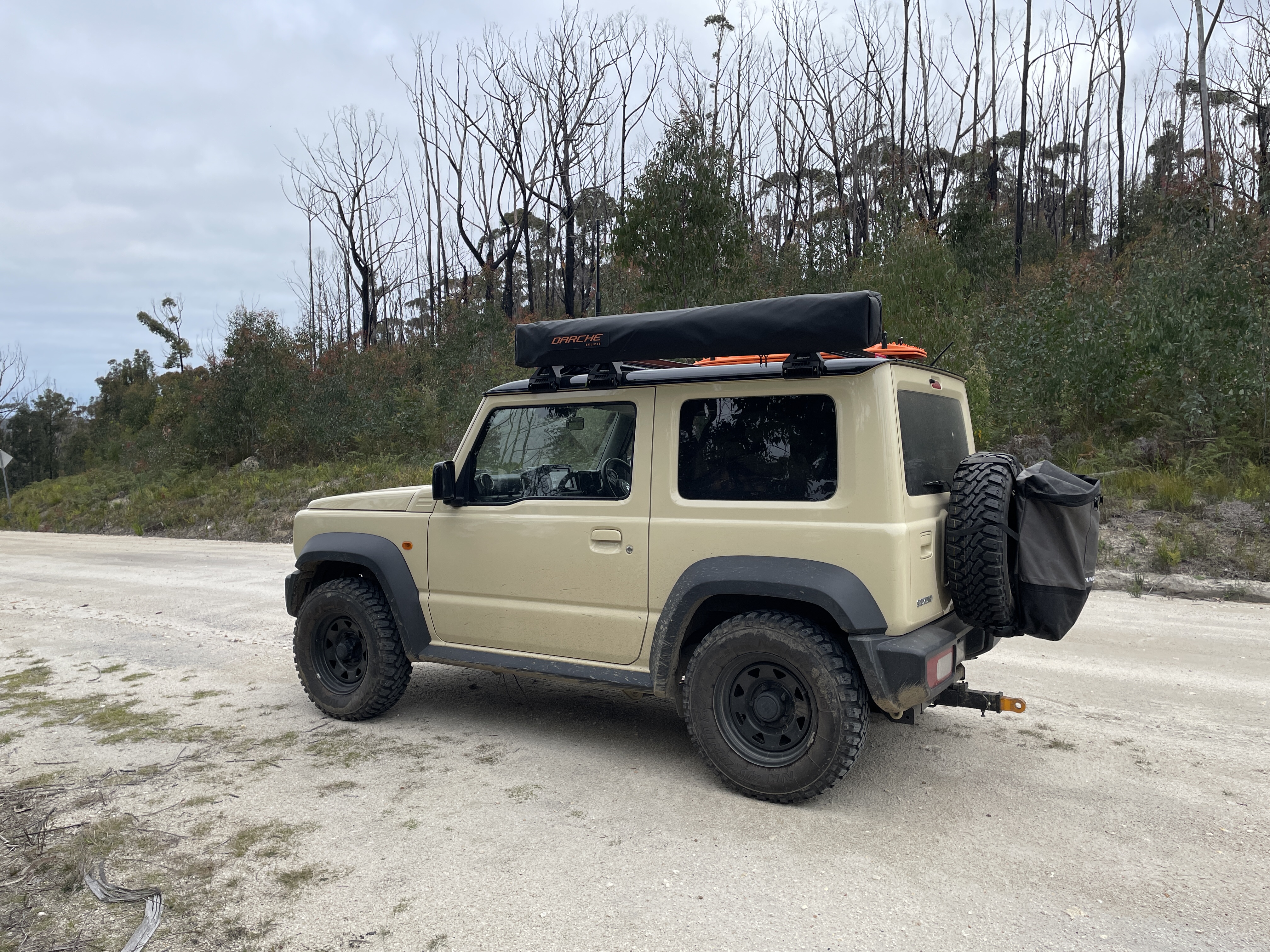cross-posted from: https://aussie.zone/post/1198065
We can and should be allowed to drive faster on our freeways and motorways; but don’t think governments will let it happen overnight.
Or you could make public transport run faster and more efficiently and faster, reducing the number of people who drive.
In many placez Public transport doesn’t necessarily need to be faster, it just needs to be way more frequent to be practical
Oh, plenty of buses could become train lines that run every 10 - 20 minutes.
Counter point: The Aus driving tests don’t prepare/train drivers for the current highway speeds as it is.
If we implemented a system like Finland’s, where new drivers are actually taught how to handle vehicles in adverse situations and conditions then I agree raising the speed limit would be feasable.
But that would require a huge state gov investment in training infrastructure and that will never happen.
Agree. We don’t even teach them to drive at night.
And we never retest anyone.
You were able to do a reverse park once? Cool, you are now allowed to dive for the rest of your life.
Every person should be retested every 5 years.
They couldn’t possibly do that in WA. There’s about a six month wait now to book a driving test. That’s just for new drivers.
But that would require a huge state gov investment in training infrastructure and that will never happen.
In QLD you must log 20? hours driving at night
For learners required to log hours this is also true in Vic and NSW, but there is an age cut off (21 and 25) for this requirement.
Log, yes. Prove, no.
Also, The current condition (and ongoing condition) of Australia’s primary road surfaces are unsafe even at the current speed limit.
The combination of poor initial construction, decades of neglect, bushfires, floods, abuse by speeding and overweight road users has resulted in a regional road network that is so far gone that the most cost effective solution is to tear up whole sections and start from scratch.
The faster you go above 80 you use exponentially more energy. Invest in public transport you knobs.
You don’t use exponentially more fuel, but cubically. Exponentially is not just a word for “quickly”, but a function.
And anyways, that isn’t only the case for speeds higher than 80, but for every higher speed. So it’s not like there is an objective sweet spot.The 80 kph rule of thumb is actually part of the design parameters of most regular cars. They are built to be most fuel efficient at 80 (or probably more accurately aerodynamic designed for 80).
I was using exponential colloquially (and fair cop given its usage during Covid), but I think you’re just using cubic as a rough guide also due to air resistance. I’d note there are no extra gears at the higher speeds, so you’re probably less efficient on the tyres etc.
I didn’t know about that. Thanks, that’s interesting! Sorry if I sounded a little condescending, I didn’t intend to.
And cubic just means an exponent of 3, which is one kind of exponential relation.
No, exponential is Nx, polynomial growth takes the form xN, and in the case of a cubic, N is 3. Exponential functions tend to grow much, much faster than polynomial ones.
that isn’t only the case for speeds higher than 80, but for every higher speed
Only if you’re talking about air resistance exclusively. I don’t know what number it is precisely, but at lower speeds other forces dominate (like efficiency in the gears), and at a certain point air resistance becomes the more dominant force, growing with the cube of velocity. It’s certainly possible that the number is 80 km/h.
In any car built in the last ~20 years, you can monitor your real time consumption either on the dashboard or else by hooking up your phone into the mechanic’s diagnostics port (there are cheap bluetooth dongles).
In general, fuel consumption is infinite when the engine is running while you’re not moving. At very low speeds economy is terrible and as you increase speed fuel efficiency improves until the sweet spot which is usually at about 60km/h. That sweet spot is fairly wide - up to around 80km/h in most cars and then it starts getting bad again.
It’s different for every car - but as a rule of thumb if your car uses X amount of fuel at 60-80km/h, then it probably uses about twice that much fuel at 20km/h and 130km/h.
HOWEVER that 130km/h number assumes the car hasn’t been modified. If you’ve installed a roof rack for example then it could be more like triple the consumption you had at 80km/h! Low speed would be less affected by modifications.
Ultimately the only number that matters is the number for your car, so why not measure it? Modern cars use a computer to calculate the fuel injection speed and it’s possible to monitor that number.
Car crash outcomes are also much worse.
Yep. Because kinetic energy increase at the square of the velocity.
please don’t redirect public transit spending to road maintenance spending
Road infrastructure is also required for Freight and Tourism.
Tourism is critical for our economy now due to the reduction of Resource-based primary industry.
Not only does Public Transport infrastructure need to be improved for the populace’s mundane transport needs, Freight Rail networks also need to be improved and freight companies would need incentives to use rail for the bulk of their regional transport requirements.
Regional public transport to tourist destinations would also need to be reinstated and restored. All those rail trails that have been reclaimed and rebuilt in the last 40 years will need to be torn back up and the rail lines would need to be rebuilt.
Sometimes, I think the only country that hates good public transit as much as America is Australia. One legend to another, I tip my hat to you.
Honestly, this wouldn’t really be needed if you guys even had highER speed rail connections between your cities (think 200 kph, rather than 320), which would be a lot cheaper to build than real HSR. Besides that, taking a train sucks a lot less than driving all those huge distances, or at least, in my opinion it sucks a lot less.
I feel like petroleum companies have played some role in assuring that countries like America and Australia don’t develop rail capabilities.
We’ve been trying to build a widespread high speed rail network for half a bloody century, the problem is after the first few costing reports and plans are drawn up and agreed upon, the government gets kicked out and the plans scrapped for budget savings, then a few years pass and a new plan is started from scratch.
The problem is they genuinely don’t want to. There’s no real political will to achieve the goal and some pollies will give lip service to the idea and never truly bother to get it started.
And yet over the decades, we’ve spent hundreds of millions on “feasibility studies” that amount to nothing.
Funilly enough the people who received that money all happened to be buddies with the politicians. On both sides even.
I wouldn’t be looking forward to tradie utes with 3 tonne of tools in the back and the handling of a boat, doing 130 or more on the freeway
90 or 100km/h limit on towed boats. I think the limit is 90 (at least in south Australia). This way they won’t be handling dangerously, can be imposed with truck speed limits.
I think you misread
the handling of a boat
Driven any major highway lately? I feel that’s already the norm…
No worse than an Italian grandmother doing 135 in a fiat 500
Along with their dog tied up
Haha that will never happen. If anything speed limits will drop.
I agree with one point made in the article. 10 or 20 km/h speed difference is usually not too bad, but 30-40 km/h differences are a different story.
- No stupid reduced max speed limits for learners/provisional drivers. They are learning how to drive with everyone else, not how to drive with everyone else going around them.
- Maybe the truck and bus max speed limit should be bumped up too. Though idk maybe they aren’t certified/tested at that level?
Half of them are driving at 140km/h in a school zone anyway. Agreed, stop limiting them and teach responsibility so they can independently make good choices.
In my shitty 1990 Kia that speed would make me feel like an astronaut re entering the Earth’s atmosphere in a space shuttle
I’ve long held the view the major highways should be set to 140, aimed at reducing fatigue. Someone will drive Melbourne to Sydney in a day anyway, and two hours less travel time will help make them safer when they get there.
I would definitely support increasing the speed limits on remote roads like that.
But an even better approach would be to reduce their travel time by getting them off the road entirely. A high speed train could get from Sydney to Melbourne in under 5 hours, about half the time it takes to drive. And that’s 5 hours that you could use usefully doing work, reading, or even napping.
I think talk about raising the speed limits is comparatively more useful when talking about people not going between major cities. Roma to Brisbane, for example, or Sydney to Dubbo. Places where high speed rail doesn’t make sense.
Reading about very fast train is very sad
I would certainly have appreciated that last month - did a ~1000k run up the coast (and back a couple of weeks later) with the vast majority of that on dual carriageway highways that could have been driven at much higher speeds without compromising safety. As it was I just stuck at a true 115 most of the way, but shaving a couple of hours off that trip would have been nice.
why do you need to drive from Sydney to Melbourne?
It was a huge deal when the US boosted to 65mph (104.6 kph).
Here in NZ, we have a sub-handful of places where 110 is allowed, the rest is mostly 100 with more and reduced to 80, 70, 60 or 50 (in places that used to be 100).
To be fair, a great deal of our roadway is not up to safe use at 100 (though I do disagree with where that dividing line is placed).
Unfortunately I think that reducing the limits on unsafe surfaces and roading layout is now seen as a permanent solution. Any mitigation mechanism like that should be coupled with at some publicly visible prioritisation to resolve it.
Alas with our small population and relatively large roading network I doubt it’s getting better for us any time soon.
Hey you. Over the ditch. I feel your pain and hope you have better luck.
I drove from Auckland to Hastings and back on my last NZ trip. It was surprising how you don’t have the same highway infrastructure that Australia has. Once I was south of about Hamilton, the main road was what we’d call a country road.
Still a lovely drive, though. Would do it again.
100% should happen, crazy how its still 110 is the max we can go in most cases.
I recently had a holiday in NT and the 130kmh speed limits make such a difference. Definitely felt a lot less fatigued than I expected I would for the distances I drove
Definitely think some highways in other states could be worth increasing the limit
If we do this (and we should) we’ll need to undo a lot of substandard road works and additions. Plenty of roads built to design speeds that would support 130km/h or more and then modified in ways that drastically drop that speed.
Victoria’s approach to shoulders on highways and freeways springs to mind. Likewise the biker slicer tensioned wire fences. What they catch at 100km/h they’ll start to roll at higher speeds as they already will do with 4x4s and SUVs.
There are long stretches of rural highway in Australia where the 110km/h limit is too low, in my opinion.
130 should not be the default everywhere though.



















